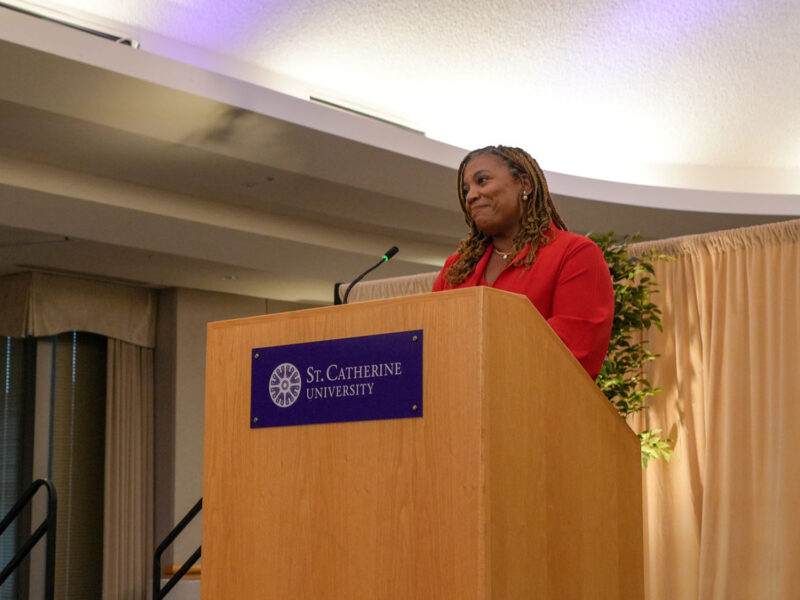Here are a few tips that can help your clients effectively prepare for end-of-year giving.
As the holidays grow closer, many of us begin to think about giving back. For some, that means volunteering more and for others it means making financial contributions to nonprofits and causes they care about.
For donors, financial contributions can take many forms, including non-cash assets. Gifts of assets such as real estate, farm assets or stock can be more financially savvy and may allow your clients to give more than they could from their checking accounts.
Here are three smart giving options to consider with your clients this year.
- Gifts of Appreciated Non-qualified Securities or Assets
- Qualified Charitable Distributions (QCDs)
- Charitable Deduction for Non-Itemizers
1. Gifts of Appreciated Non-qualified Securities or Assets
Many donors have discovered the benefits of donating stock or mutual funds. Investment portfolios are often much larger than checking accounts, so donors have the ability to give more.
Donating highly appreciated securities offers additional financial benefits that cash gifts do not. When your client donates stock to a nonprofit, the income tax deduction is based on the fair market value of the stock – regardless of what they paid for it.
For example, if your client has a share of stock that was purchased years ago for $5.00/share, and today it’s worth $25.00/share. When that share is given to a nonprofit, the income tax deduction is $25.00, which allows the nonprofit to sell the stock free of capital gains and have your client's entire deduction go toward furthering their mission.
Donating stock is simple. Most of the time, the stock can be transferred to the nonprofit electronically.
A good way to get started is to analyze the stock portfolio and determine which shares to donate.
If their favorite nonprofit is not equipped to accept a gift of stock, we will work with you and your client to create a donor advised fund (DAF). Once your client has a DAF, we will sell the stock tax-free so that the donor can recommend grants to the nonprofits of their choice. This works well when the client wants to benefit multiple causes with a single gift of stock or the nonprofit is not prepared to accept stock.
A transfer of stock usually takes a few days. A transfer of mutual funds can take longer. Either way, it’s a great idea to start the process early. In order to secure an income tax charitable deduction for this year, the stock must arrive in the organization of choice’s account by or before Dec. 31.
Receive helpful content for guiding your clients on tax-smart charitable giving in your inbox monthly.
2. Qualified Charitable Distributions (QCD)
One of the most exciting giving options available is the qualified charitable distribution (QCD).
A QCD is a gift from an Individual Retirement Account (IRA) directly to a nonprofit. IRAs are usually much larger than a checking account; therefore your client can give more than they could from their cash reserves.
A QCD is available for anyone 70 ½ or older. Most people with IRAs must begin taking required minimum distributions (RMDs) at age 72. Those distributions can be very large and result in significant taxable income. If some or all of the RMD isn’t needed, the IRA owner can direct it to their favorite nonprofits and avoid the income tax associated with that distribution. There is no charitable income tax deduction available for a QCD, but the avoidance of income tax is often a better result.
An IRA owner can take a distribution from their IRA and then make a subsequent cash gift to a nonprofit, but the end tax result is often not as beneficial as using the QCD technique. The reason is because charitable income tax deductions don’t help with certain tax increases.
For example, Social Security income tax and Medicare premiums are based on adjusted gross income (AGI). Charitable income tax deductions do not reduce AGI. If someone makes a QCD gift, that extra income from the IRA is bypassed completely and does not rise, which is why this giving technique has become popular with many people.
A QCD is only available from an IRA – not other types of retirement accounts such as a 401(k) or 403(b) accounts. The Foundation can accept QCD gifts. In order for a QCD to count toward an RMD, it must be made by or before the distribution’s deadline. That is typically Dec. 31, but can vary depending on individual circumstances.
Every IRA administrator has their own procedure for processing a QCD. Typically, there is an online form to complete and will usually require the following information:
Legal name of nonprofit
Federal Tax ID Number for nonprofit
Mailing address for the nonprofit
When the nonprofit receives a QCD check, it won’t indicate who it came from. If your client would like the nonprofit to know where the check is from, it is best for them to contact the nonprofit ahead of time and let the nonprofit know the amount of the QCD they plan to make and the name of the IRA administrator. This way, the organization will be able to match the gift with a name and thank the donor appropriately.
3. Charitable Deduction for Non-Itemizers
Until recently, there was no tax incentive for charitable gifts unless someone itemized their deductions. The CARES Act allows for a new “above-the-line” charitable deduction of up to $300 ($600 for joint filers) for those who don’t itemize. This new incentive was available in 2020 and has been extended for 2021. It has not yet been extended for future tax years, so we suggest you encourage your clients to give before the year ends.
These are just some of the ways your clients can maximize the tax benefits of their giving. To learn how we can better work with you and your clients, please contact one of our gift planners. For additional helpful information and insights, sign up for our professional advisor e-news.
The Saint Paul & Minnesota Foundation does not provide tax, legal or accounting advice. Please consult your own tax, legal and accounting advisors regarding your individual situation before engaging in any transaction.









